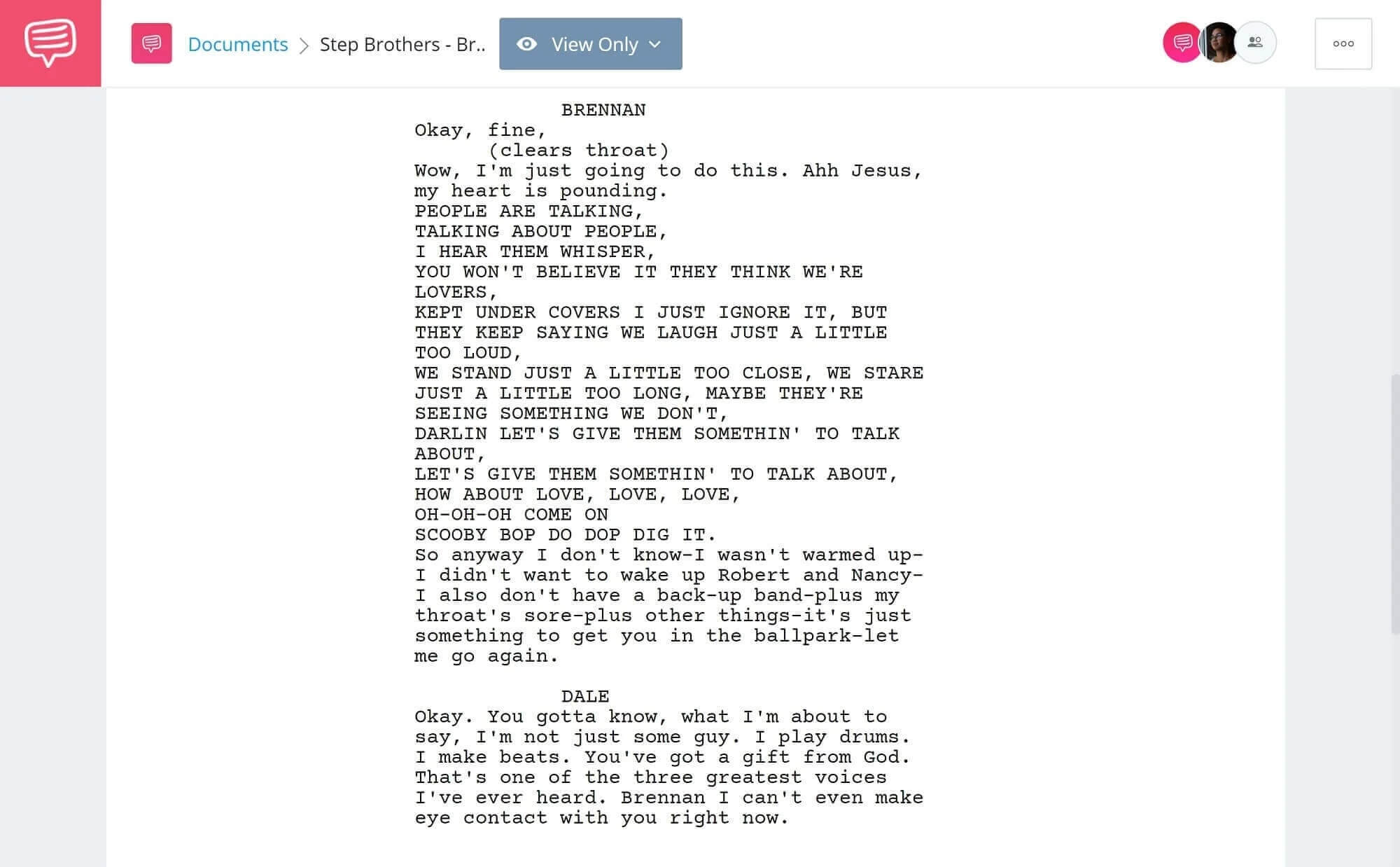In any story, drawing comparisons helps the audience connect new ideas to familiar concepts. One of the best tools for this is the simile. But what is a simile, and why is it so effective? Writers and filmmakers use similes to enrich dialogue, deepen character understanding, and add texture to themes, making storytelling more immersive. Understanding the meaning of simile and its role in writing is essential for any storyteller. If you’ve ever asked, “What is a simile?”
This guide will walk you through both the definition and its creative applications. Before diving into examples, let’s first define simile and understand its purpose in language and storytelling.
SIMILE DEFINITION
What is a simile?
A simile is a figure of speech that directly compares two different things using the words like or as. The term originates from the Latin word similis, meaning "similar" or "like." Similes are prevalent in literature, including poetry and prose, and even in film, where they enhance visual storytelling. Unlike a word metaphor, which makes an implicit comparison, a simile compares explicitly, making the relationship between two ideas clearer.
What is a Simile?
Similes examples in everyday life
Similes frequently appear in everyday speech, making expressions more colorful and engaging. If you were to define simile in its simplest form, it is a way to enhance meaning by comparing two different things in an accessible and memorable way. Some popular examples of simile phrases include:
- Busy as a bee
- Run like the wind
- Cool as a cucumber
- Fresh as a daisy
- Light as a feather
- Tough as nails
- Sings like an angel
- As good as gold
- Slept like a log
You’ve heard a lot of these, right? We could go on and on, but this is just a small portion of the similes you’ll come across in your day-to-day.
But of course, similes aren’t relegated to clichés. Most screenwriters will want to avoid the tired similes like the ones we’ve listed.
Simile and Metaphor
What’s the Difference?
Both simile and metaphor are figures of speech used in figurative language, but they function differently. To define simile correctly—and to truly answer the question what is a simile?—it is a comparison that explicitly uses “like” or “as,” while a metaphor makes a direct comparison without these words.
A simile is a type of comparison that uses like or as a type of metaphor to make a direct comparison without these words. For example:
- Simile: “Life is like a box of chocolates—you never know what you’re going to get.” – Forrest Gump
- Metaphor: “Time is a thief.” (Here, time is directly compared to a thief without using like or as.)
Similes and metaphors are all used in everyday speech, but are also used to enhance expressiveness in writing. Unlike a word metaphor, which makes an implicit comparison, a simile makes an explicit comparison. Understanding both simile and metaphor helps writers craft more engaging and expressive narratives.
Simile Examples
Categories of similes with illustrations
Similes serve different purposes in writing, depending on their function and effect. Understanding a simile definition can help writers determine which type best suits their narrative. Here are some key types:
- Descriptive Similes – Used to create vivid imagery.
- "Her smile was as bright as the sun."
- "Brave as a lion."
- Comparative Similes – Used to highlight similarities between two concepts.
- "His mind was like a steel trap—quick and unyielding."
- Hyperbolic Similes – Used for exaggeration and comedic effect.
- "He ran like a cheetah on a sugar rush."
- "Bold as brass."
- Literary Similes – Commonly found in poetry and prose.
- "O my Luve is like a red, red rose that’s newly sprung in June." — Robert Burns
- "Cold as ice."
- Cinematic Similes – Used in movies to enhance dialogue or character interactions.
- "You’re as cuddly as a cactus." – The Grinch Who Stole Christmas
Related Posts
What is a Simile?
Simile examples in literature
Writers use similes to create striking imagery and deepen thematic meaning. A strong simile definition ensures that the comparison is clear, effective, and impactful. Here are some notable examples of simile in literature:
- "He looks like right after the maul hits the steer and it no longer alive and don't yet know that it is dead."— As I Lay Dying by William Faulkner
- "The cafe was like a battleship stripped for action."— The Sun Also Rises by Ernest Hemingway
Related Posts
What is a Simile in Film and Screenwriting?
Similes in movies
We see similes in literature and everyday speech, so it should come as no surprise that similes are all over movies as well. n screenwriting, understanding a simile definition helps writers craft dialogue that is more dynamic and visually expressive. Directors will use the figurative technique in dialogue as well as in the action of their script.
Like in any other medium, similes can have a myriad of functions in film. Similes can be used to hyperbolize or exaggerate a point a character wants to make. This is often used in comedy to both emphasize a point and make a joke. Consider this moment from Step Brothers.
Here, Brennan is singing for the first time in front of Dale. After singing, Brennan is insecure and does not know if Dale genuinely likes his singing or not. Dale continues to reassure him that his singing is amazing.
Now, let’s take a look at the screenplay, which did not utilize this comparison. In this version, written using screenwriting software, John C. Reilly improvised the line “Your voice is like a combination of Fergie and Jesus.”
Brennan Sings • Read Full Scene
Can you see the difference between the screenplay and the final scene? John C. Reilly’s simile made the scene more hilarious and emphasized his admiration for Brennan’s voice more effectively and with fewer words. This a great simile example that results in a scene that is more hilarious and more realistic dialogue.
Filmmakers and screenwriters also use similes to enhance dialogue and create memorable moments. Here are some famous simile examples in movies:
- “Our love was as fleeting as a summer’s day.” 500 Days of Summer
- “Your voice is sweet like honey.” A Star is Born
- “War has left the land scarred, like a wounded beast.” War Horse
- “Navigating high school is like walking through a minefield.” Mean Girls
- “You’re cuddly as a cactus.” The Grinch Who Stole Christmas
Did You Know
You may be wondering why we didn’t include one of the most famous lines in cinema: “Life was like a box of chocolates. You never know what you’re going to get.” That’s because it’s an analogy– Forrest compares life to a box of chocolates, and then continues to explain his point with the second sentence.
As all these examples show us, similes are an invaluable literary tool. When literal descriptions fail you, reach for a figurative comparison. The result can be surprising, funny, or moving.
What is a Simile?
FAQ’s
What makes a good simile?
A strong simile is relevant, vivid, and avoids clichés. It should enhance understanding without overwhelming the reader with unnecessary comparisons.
Can similes be used in formal writing?
Yes! While similes are more common in creative writing, they can be used effectively in formal contexts to clarify complex ideas.
Are similes the same as metaphors?
No. While simile and metaphor are both figures of speech, a simile makes an explicit comparison using like or as, whereas a metaphor does not.
Related Posts
Final Thoughts on Similes
Conclusion
What is a simile? It’s more than a classroom term—it’s a powerful literary tool that helps writers and filmmakers enhance storytelling by creating vivid comparisons. A well-crafted simile definition ensures that comparisons remain sharp and evocative, making language more compelling. They make descriptions engaging, add humor, build tension, and evoke emotions. But ultimately, what is a similie? A simile is a way of making language more expressive by drawing clear and relatable comparisons. Whether in literature, film, or everyday speech, a well-crafted example of simile ensures ideas are accessible and memorable.
UP NEXT
Explore more literary devices
Similes are just one of many literary devices and types of figurative language, including metaphors, juxtaposition, and allegories. If you're a writer and want to develop your craft fully, do yourself a favor and continue this exploration. The next article on literary devices is a gateway to many of these tools that help add substance and style to any type of written work.


His words felt like a dagger in my heart. this is example of simile or imagery? please guide
very cool